Warning: Always change pads on both rear brakes at the same time. Replacing pads on only one of the wheels can lead to uneven braking. Dust generated during pad wear may contain asbestos, which is very hazardous to health. DO NOT blow off dust with compressed air or inhale air containing asbestos. Use a respirator when working on the brakes. DO NOT use gasoline (or gasoline-based solvents) for dust cleaning. Use brake fluid or methyl alcohol. Avoid contaminating the pads or brake disc with brake fluid or oil.
1. Remove the rear brake drums as directed in paragraph 5. Servicing each brake in turn, follow the instructions below.
2. Pay attention to the location of the springs and the regulator. Clean components with brake flush and dry. Place a container under the back shield to catch drips (see fig. 6.2).
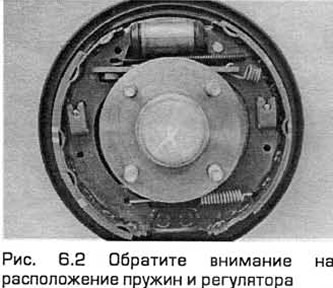
3. Remove two springs. To do this, squeezing the upper ends with pliers, remove them from your fingers. Pull the spring pins out of the rear shield (see fig. 6.3, a, b).
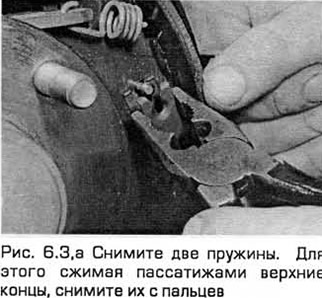
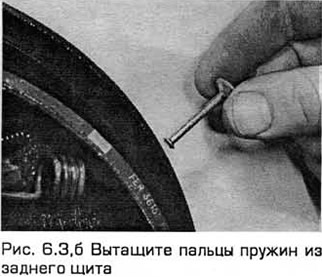
4. Pull back the lower end of the lead (front) pads from the lower support rod (pliers or wrench) (see fig. 6.4).
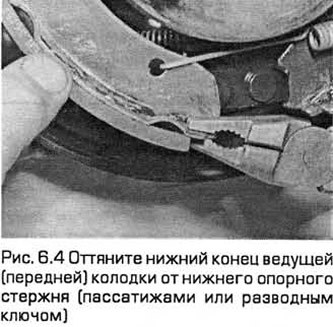
5. Release the slave (back) block from the lower support rod. Then slide the bottom ends of the shoes together. Unhook the lower return spring from the shoes, taking into account the position of the holes (see Fig.6.5, a, b).
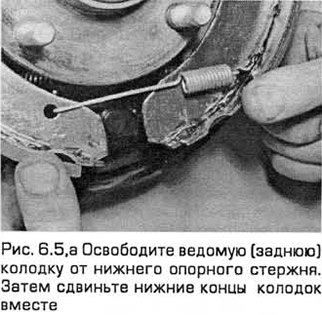
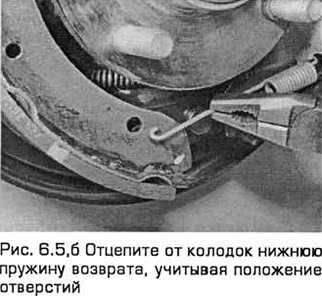
6. Slide the lower ends of the blocks together and disconnect their upper ends from the wheel cylinder. Do not damage rubber caps (see fig.6.6).
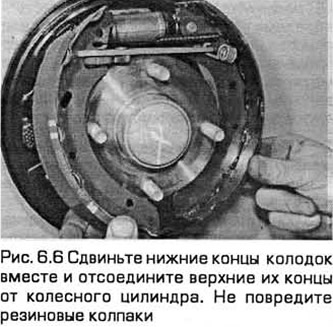
7. Unhook the upper return spring from the shoes and remove the drive shoe from the rear shield (see fig.6.7.a,b).
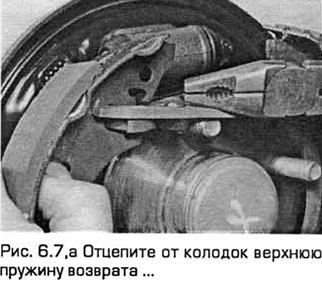
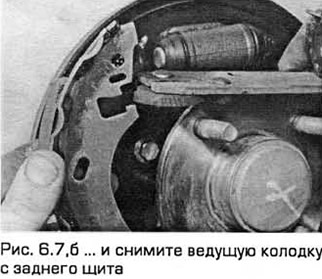
8. To prevent the piston from accidentally popping out of the cylinder, fix the cylinder with the piston with tape or wire. Do not press the brake pedal when the pads are removed (see fig.6.8).
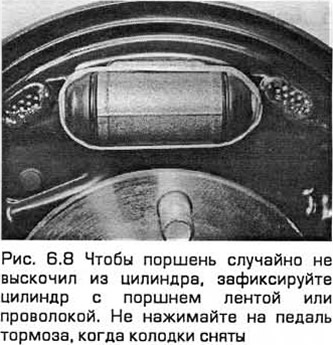
9. Pull the handbrake cable spring from the drive lever on the rear side of the driven shoe. Remove the end of the cable from the slot of the lever and remove the block (see fig.6.9).
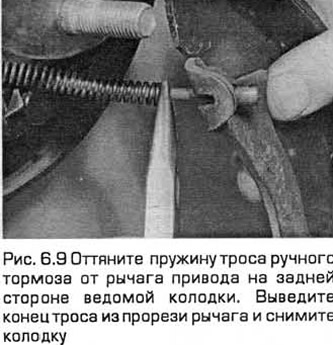
10. Unhook the automatic governor post from the driven shoe and remove the small spring (see fig.6.10,a,6).
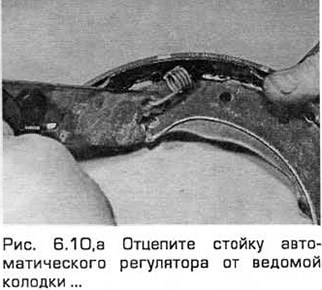

11. If the wheel cylinder is leaking or if it has other problems, check it as indicated in the next section.
12. Wash the rear shield. Apply a little refractory grease to the contact points between the shield and the pads. Be careful - the lubricant must not get on the friction surfaces of the brake (see fig.6.12).
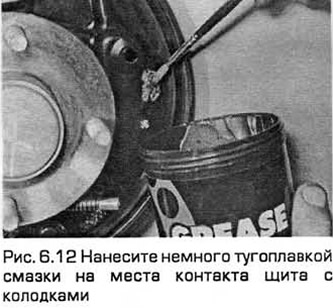
13. Lubricate the sliding components of the auto-adjuster with refractory grease. The cutouts on the cam must remain clean (see fig.6.13).
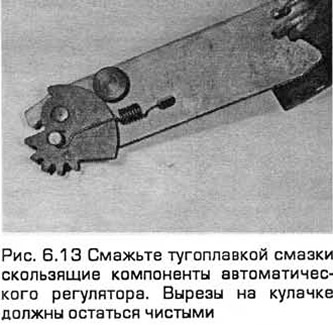
14. Install new brake pads in the reverse order of removal. Set the eccentric cam to its lowest position before connecting it to the driven shoe.
15. Before installing the brake drum, check it (paragraph 5).
16. After installing the drum, install the wheel. Then perform the replacement operation on the other rear brake.
17. Lower the vehicle to the ground and tighten the wheel nuts.
18. Depress the brake pedal so that the automatic adjuster and pads fall into place.
19. Make several stops while moving forward and backward, and fully apply the parking brake two or three times. Perform a test drive to check the operation of the brakes, as well as to ensure that the new pads are worn in to the disc. Do not forget that until the pads are worn in, braking with maximum efficiency is impossible.
Visitor comments